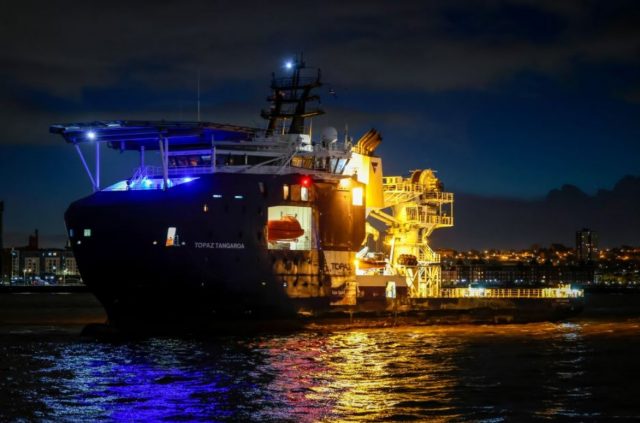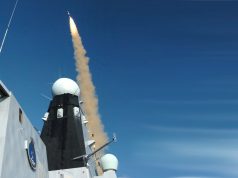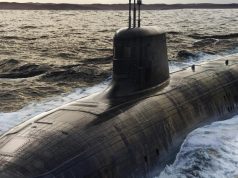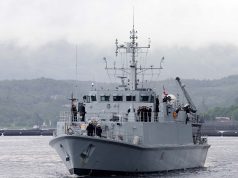Britain’s critical subsea infrastructure is set to be strengthened as the first of two future undersea surveillance ships arrived into Cammell Laird’s Birkenhead shipyard on January 19.
Once operational, the ship will be dedicated to safeguarding seabed telecommunications cables and oil and gas pipelines. The 98-meter-long, adaptable offshore patrol vessel will act as a ‘mother ship’, operating remote and autonomous offboard systems for underwater surveillance and seabed warfare.
Shortly after arriving at Cammell Laird, the ship will be repainted and have critical military equipment installed, before taking up its role as the first of two Multi-Role Ocean Surveillance (MROS) ships, operated by the Royal Fleet Auxiliary (RFA) later this year.
The vessel will be formally handed over to control of the RFA in the next few days, several months ahead of schedule – following an acceleration of the acquisition announced by the UK Defence Secretary in November 2022.
“The first of two dedicated subsea surveillance ships will join the fleet this summer, bolstering our capabilities and security against threats posed now and into the future,” Defence Secretary Ben Wallace said.
It is paramount at a time when we face Putin’s illegal invasion of Ukraine, that we prioritise capabilities that will protect our critical national infrastructure.
The vessel, currently named ‘Topaz Tangaroa’ but due to be renamed as it joins the RFA fleet, was selected to meet the requirements of the Royal Navy, having been built four years ago to support a mix of underwater operations, including work on oil rigs, construction, maintenance and inspection work, as well as autonomous submarine operations.
The 6,000-ton vessel is equipped with a helipad, crane, and expansive working deck and features a ‘moon pool’ – a large access point in the underside of the hull through which submersible capabilities can be launched.
The vessel will be crewed by around two-dozen RFA sailors, while around 60 Royal Navy specialists will operate the undersea surveillance systems and other survey and warfare systems when embarked.
The vessel is due to enter operational service in summer this year, with the program for the acquisition of a second ship currently in concept phase.



























